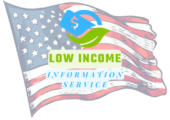Low Income Mortgage Loans
Welcome to our blog post on low income mortgage loans! In this article, we will explore the world of mortgage loans specifically designed for individuals with limited income. We will delve into the challenges faced by low income borrowers when it comes to securing a home loan and discuss various options available to them. Additionally, we will analyze the benefits and drawbacks of low income mortgage loans to help you make an informed decision. So, if you or someone you know is looking to purchase a home on a low income, keep reading for valuable insights and guidance.
What Are Low Income Mortgage Loans?
Low income mortgage loans are specifically designed to help individuals or families with low levels of income purchase a home. These loans are intended to make homeownership more attainable for those who may not have the financial means to qualify for a conventional mortgage. Low income mortgage loans often offer more flexible eligibility criteria, lower down payment requirements, and reduced interest rates to make homeownership possible for low-income borrowers.
One option for low income mortgage loans is the Federal Housing Administration (FHA) loan program. This government-backed program helps low-income borrowers by providing them with more affordable mortgage options. The FHA loan program allows borrowers to qualify for a mortgage with a lower credit score, a smaller down payment, and a higher debt-to-income ratio than conventional loans.
Another option for low income mortgage loans is the USDA Rural Development loan program. This program offers loans to low-income borrowers who are looking to purchase a home in rural areas. The USDA loan program provides low or no down payment options and offers low-interest rates to make homeownership more accessible for those living in rural communities.
- Benefits and Drawbacks of Low Income Mortgage Loans:
| Benefits | Drawbacks |
|---|---|
| – Increased Access to Homeownership | – Limited Loan Amounts |
| – Flexible Eligibility Criteria | – Additional Fees and Costs |
| – Lower Down Payment Requirements | – Mortgage Insurance |
| – Reduced Interest Rates | – Limited Options for Property Types |
Low income mortgage loans offer several benefits to low-income borrowers, including increased access to homeownership, flexible eligibility criteria, lower down payment requirements, and reduced interest rates. These loans make it possible for individuals and families with low income levels to achieve their dream of owning a home. However, there are also some drawbacks to consider. Limited loan amounts, additional fees and costs, the requirement for mortgage insurance, and limited options for property types are some of the potential drawbacks associated with low income mortgage loans.
Challenges Faced By Low Income Borrowers
Low income borrowers often face a unique set of challenges when it comes to obtaining mortgage loans. These challenges are influenced by various factors, including their limited financial resources and the stringent lending criteria set by financial institutions. The difficulties faced by low income borrowers can have a significant impact on their ability to secure affordable housing and achieve homeownership.
One of the main challenges faced by low income borrowers is the limited availability of suitable loan options. Traditional mortgage loans typically require a certain level of income and creditworthiness, which may be difficult for low income individuals to meet. This limited availability can make it challenging for them to find a mortgage loan that suits their financial situation and objectives.
Another challenge faced by low income borrowers is the higher interest rates and fees associated with low income mortgage loans. Due to their limited income, lenders may perceive them as a higher risk and therefore charge higher rates to protect themselves. These higher rates can significantly increase the overall cost of the loan and make it more difficult for low income borrowers to afford the monthly mortgage payments.
Additionally, low income borrowers often face difficulties in meeting the down payment requirements set by lenders. Many mortgage loan programs require borrowers to make a down payment of a certain percentage of the total loan amount. However, low income individuals may struggle to save enough money for a substantial down payment, further limiting their options for obtaining a mortgage loan.
To overcome these challenges, low income borrowers can explore alternative loan programs specifically designed to assist individuals with low incomes. These programs may offer more flexible eligibility criteria, lower interest rates, and reduced down payment requirements. It is essential for low income borrowers to research and compare the various loan options available to find the best fit for their financial circumstances.
| Pros | Cons |
|---|---|
|
|
|
|
|
|
In conclusion, challenges faced by low income borrowers in obtaining mortgage loans include limited availability of suitable loan options, higher interest rates and fees, and difficulties in meeting down payment requirements. However, by exploring alternative loan programs and conducting thorough research, low income borrowers can increase their chances of finding a mortgage loan that fits their financial circumstances and achieve their goal of homeownership.
Options For Low Income Mortgage Loans
When it comes to buying a home, many low-income borrowers face significant challenges in securing a mortgage loan. However, there are several options available specifically designed to assist individuals with limited financial resources. These options provide a pathway for low-income borrowers to achieve their dream of homeownership. In this blog post, we will explore some of the key options for low-income mortgage loans and discuss their benefits and drawbacks.
1. Government-Backed Loans: One of the most popular options for low-income borrowers is to consider government-backed loan programs. These programs, such as the Federal Housing Administration (FHA) loans, offer flexible qualification criteria and down payment assistance options. FHA loans are insured by the government, which enables lenders to provide loans to borrowers with lower credit scores and higher debt-to-income ratios.
2. Community Development Programs: Many local and state governments offer community development programs aimed at assisting low-income individuals with their mortgage needs. These programs often provide down payment assistance, favorable interest rates, and closing cost grants. It’s worth exploring such programs in your area to see if you qualify for any available benefits.
3. Nonprofit Organizations: Some nonprofit organizations specialize in providing affordable housing solutions for low-income individuals. These organizations work closely with lenders to offer special mortgage products and down payment assistance programs. They may also provide financial education and counseling services to help borrowers understand the process and manage their finances effectively.
4. Alternative Financing Options: In addition to traditional mortgage loans, low-income borrowers may also consider alternative financing options. For example, lease-to-own programs allow individuals to rent a property with the option to buy it in the future. This can be a viable solution for those who are unable to qualify for a conventional mortgage loan due to credit or income limitations.
In conclusion, while low-income borrowers may face challenges in obtaining a mortgage loan, there are various options available to help them achieve homeownership. Government-backed loans, community development programs, nonprofit organizations, and alternative financing options all provide avenues for individuals with limited financial resources to realize their dreams of owning a home. It’s important to research and explore these options thoroughly to find the one that best fits your specific circumstances.
Benefits And Drawbacks Of Low Income Mortgage Loans
Low income mortgage loans are specially designed loans for individuals or families with low or moderate incomes who want to become homeowners. These loans provide opportunities for people who may not otherwise be able to afford a home of their own. However, just like any other financial product, low income mortgage loans come with their own set of benefits and drawbacks. In this blog post, we will explore the advantages and disadvantages of these types of loans.
Benefits of Low Income Mortgage Loans:
1. Increased accessibility: One of the major benefits of low income mortgage loans is that they increase accessibility to homeownership for those with low incomes. These loans often have more flexible eligibility requirements, allowing individuals with lower credit scores or limited savings to qualify for a mortgage.
2. Assistance programs: Low income mortgage loans often come with assistance programs that provide financial aid to borrowers. These programs may offer down payment assistance, closing cost assistance, or even subsidies for interest rates. Such assistance can significantly reduce the upfront costs of purchasing a home.
3. Building equity: Another advantage of low income mortgage loans is the opportunity to build equity. As homeowners make monthly mortgage payments, they gradually increase their equity in the property. This equity can be used in the future to obtain additional financing or provide a financial safety net.
Drawbacks of Low Income Mortgage Loans:
1. Higher interest rates: One of the drawbacks of low income mortgage loans is that they often come with higher interest rates compared to conventional loans. Lenders may perceive these loans as higher-risk due to the borrower’s lower income or credit history, resulting in higher interest charges over the life of the loan.
2. Mortgage insurance: Many low income mortgage loans require borrowers to pay for mortgage insurance, which adds an additional cost to the monthly mortgage payment. Mortgage insurance is designed to protect the lender in case the borrower defaults on the loan. While it allows borrowers with lower down payments to qualify for a mortgage, it increases the overall cost of homeownership.
3. Potential for overextension: It’s crucial for borrowers to carefully consider their financial situation before taking on a low income mortgage loan. In some cases, borrowers may be tempted to take on more debt than they can comfortably afford in order to purchase a larger or more expensive home. Overextending oneself financially can lead to difficulties in making monthly mortgage payments and put homeownership at risk.
In conclusion, low income mortgage loans provide an opportunity for individuals and families with limited incomes to achieve the dream of homeownership. While the benefits can be significant, it’s important for borrowers to weigh the drawbacks and carefully consider their long-term financial capabilities. Consulting with a reputable mortgage advisor can help individuals make informed decisions and navigate the complexities of low income mortgage loans. With proper planning and responsible financial management, low income mortgage loans can help bridge the gap to affordable homeownership.
Frequently Asked Questions
Example Question: What are low income mortgage loans?
Low income mortgage loans are specifically designed mortgage options for individuals or families with low income who may not qualify for traditional mortgages. These loans often have lower interest rates and more flexible eligibility criteria to help low income borrowers become homeowners.
Example Question: What are some challenges faced by low income borrowers?
Low income borrowers may face various challenges when applying for a mortgage, including limited access to affordable housing, difficulty in saving for a down payment, higher debt-to-income ratios, and limited credit history or low credit scores.
Example Question: What options are available for low income mortgage loans?
There are several options available for low income mortgage loans, including government-backed programs such as FHA loans, USDA loans, and VA loans. In addition, there are local and state programs that provide down payment assistance and other forms of financial support for low income borrowers.
Example Question: What are the benefits of low income mortgage loans?
The benefits of low income mortgage loans include access to homeownership for individuals who may not qualify for traditional mortgages, lower interest rates, and more flexible eligibility criteria. These loans can also help build credit history and provide financial stability through homeownership.
Example Question: What are the drawbacks of low income mortgage loans?
Some drawbacks of low income mortgage loans may include higher fees and closing costs, potential limitations on property choices, and the need for mortgage insurance. Additionally, low income borrowers may still face challenges in meeting monthly mortgage payments and maintaining the property.
Example Question: How can low income borrowers prepare for a mortgage application?
Low income borrowers can prepare for a mortgage application by improving their credit scores, reducing existing debts, saving for a down payment, and researching available loan options and assistance programs. It is also recommended to seek guidance from a mortgage advisor or housing counselor to navigate the process successfully.
Example Question: How can low income borrowers increase their chances of approval for a mortgage?
Low income borrowers can increase their chances of mortgage approval by demonstrating stable employment, maintaining a good credit history, minimizing other debts, and providing all required documentation accurately and promptly. It may also be helpful to explore options for down payment assistance or alternative credit evaluation methods if traditional criteria cannot be met.



